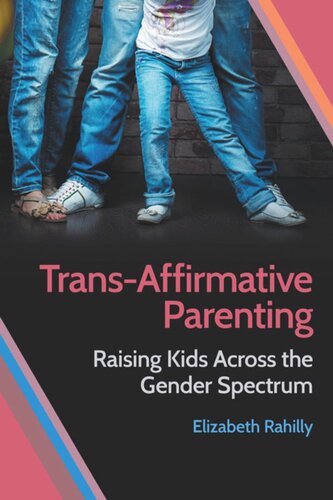

Most ebook files are in PDF format, so you can easily read them using various software such as Foxit Reader or directly on the Google Chrome browser.
Some ebook files are released by publishers in other formats such as .awz, .mobi, .epub, .fb2, etc. You may need to install specific software to read these formats on mobile/PC, such as Calibre.
Please read the tutorial at this link: https://ebookbell.com/faq
We offer FREE conversion to the popular formats you request; however, this may take some time. Therefore, right after payment, please email us, and we will try to provide the service as quickly as possible.
For some exceptional file formats or broken links (if any), please refrain from opening any disputes. Instead, email us first, and we will try to assist within a maximum of 6 hours.
EbookBell Team

0.0
0 reviewsFirst-hand accounts of how parents support their transgender children
There is a new generation of parents and families who are identifying, supporting, and raising transgender children. Their efforts—practical, political, intellectual—are part of a shift that has arisen in support of gender-nonconforming children, across schools, advocacy organizations, medical and mental health clinics, and especially online. In Trans-Affirmative Parenting, Elizabeth Rahilly interviews parents of transgender and gender-nonconforming kids, as well as medical doctors, endocrinologists, mental health practitioners, advocates, and educators, to present their fascinating stories.
Rahilly explores how parents come to terms with conventional ideas about gender, sexuality, identity, and the body, including parents’ complex deliberations about nonbinary possibilities and medical interventions for their kids. Throughout these processes, Rahilly shows that parents’ decisions and understandings often counter contemporary LGBTQ advocacy positions, which have worked to resist overly medicalized and/or gender-normative views and expectations. For example, contrary to mounting societal emphasis on gender-fluid and nonbinary identities—and despite parents’ efforts to imagine options “beyond” the proverbial gender binary—Rahilly found that her interviewees’ children were often strongly binary-identified as boys or girls. In turn, for many of the parents, gender-expansive parenting ended up looking surprisingly “gender-stereotypical,” per the children’s own assertions and expressions. In addition, many parents came to see transgender experience as strictly a biomedical condition, echoing their children’s own understandings of their bodies and their identities. While these perspectives may counter recent LGBTQ advocacy efforts, from a child-directed point of view, this is what supporting transgender children often looks like. Ultimately, Rahilly examines how parents can best advocate for transgender awareness while not reiterating the kinds of gendered and embodied expectations that has led to transgender stigma in the first place.
In an era that is increasingly transgender-aware, the book offers provocative new insights into transgender children and the parents who raise them.